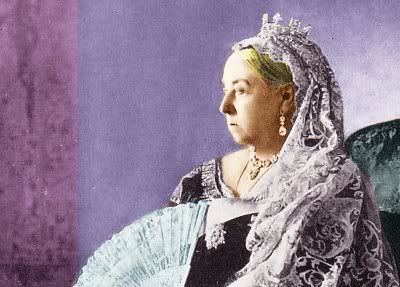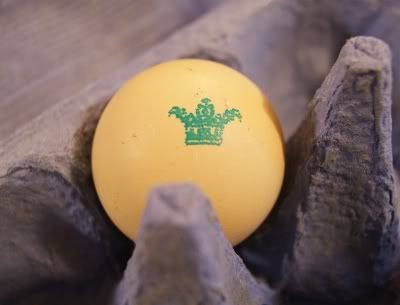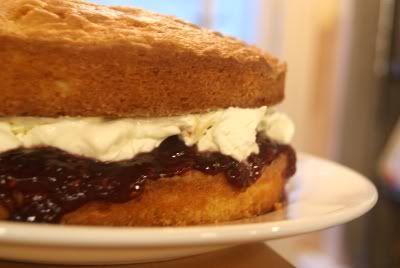
If I had a time machine I would go back to 1819 and urge the King to name his newborn child Doris. The impact two centuries later would be pervasive: a commuter could arrive at London Doris Station, walk up Doris Street to Westminster Palace and perhaps pause to admire the skill of the Dorians who carved the building from stone over a century ago. Stopping to buy a coffee, he might even treat himself to a piece of Doris sponge cake.
Just as Queen Victoria ruled over an age of innovation and change, Victoria sponge is the cake which started it all and so is the only logical place to start my Great Cake Project. From the humble Victoria sponge all other cakes can be derived: add lemon zest and steep in syrup and you have lemon drizzle cake; replace some flour with ground almonds and ginger and you have a rich and sticky ginger cake; add cocoa, cream and cherries and you’re better than halfway to a Black Forest Gateau.
Of course, this is why Victoria sponge also has such a poor reputation. The Victoria sponge is precisely as mundane as its namesake was not. It’s really nothing more than a blank canvas, yearning to be made far more interesting. No one will ever peer into a loaded cake counter and decide to skip the dazzling chocolate confections in favour of a plain lump of yellow sponge cake. Yet, in an age where most food strives to be simple and honest, can there be anything more desirable than a minimalistic mix of butter, flour, eggs and sugar? It was my duty to find out.

I haven’t made a Victoria sponge since I was a child – indeed possibly not even then, as adding a dash of cocoa or a handful of glace cherries has always been too tempting – but the recipe is hard to forget: take equal weights of sugar, butter, flour and eggs, combine them into a light batter and bake.
About four eggs should do it for a decent sized cake, and once you've weighed them in their shells you can measure out everything else to match. The ingredients should all be at room temperature to ensure a soft and happy mix, and of course I used self-raising flour because I was born in the 1970s and am addicted to convenience.
The process of making the sponge batter is a three-step science lesson in how to treat any cake (I’m talking hand-beating here – using a KitchenAid makes most of this obsolete):
- Beat the sugar and butter together to create a highly aerated mix of fat and sugar. It’s the bubbles you create at this stage which will expand in the oven to make the cake light and spongy, so don’t stint on this step. It’s also a good idea to taste the mix at this point – this perfect and gloopy combination of fat and sugars is precisely what the primeval mind craves, triggering two major pleasure sensors in your brain at the same time. Just make sure there’s enough left in the bowl to finish the cake.
- Beat the eggs in one-by-one to blend in the yolks, a powerful emulsifier that's going to keep your entire cake together. Fat and water are not natrual friends and the cake would otherwise separate. Beat the yolk through and you're creating a new emulsification in which the fat (which holds the air bubbles which lighten your cake) is evenly distributed through the rest of the structure. The egg white serves a seperate function, capturing more air bubbles in the batter and then, in the oven, forming long tight protein bonds which will help hold the whole cake together. The more eggs you add, the softer and richer the cake will be - the egg yolks also coat the flour particles and stop glutenous proteins forming that would dry out the cake.
- Sieve the flour and fold gently into the mix with a metal spoon. Sieving helps to seperate out the individual flour particles and also mixes air into the flour. It's important to be gentle folding this into the batter as it's easy at this stage to bash out the little air pockets we've spent so long creating back out of the mix. Gentle as we are, it's also essential that the flour is distributed fully throughout the batter as it is the flour's glutens and starch which will react with the moisture in the cake and heat of the oven to form a strong framework within which the moist and airy parts of the cake will sit.

Yikes. Enough science, how was the cake? Well, baked in two tins at 180 degrees for twenty minutes then sandwiched around raspberry jam and whipped cream, it was utterly delightful. It's hard to beat a freshly baked cake, and the soft, crumby, almost mundanely plain cake was a fabulous vehicle for the rich cream and (as the picture may suggest...) vast flood of raspberry jam. We ate two slices on the day and I took the rest into work. It was hoovered up before we even got to elevenses.
I don't know if I'll ever make a cake as simple and plain as this again, but at least I've confirmed that perhaps Good Queen Doris was right to lend it her name.




No comments:
Post a Comment